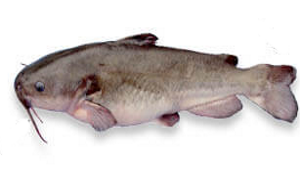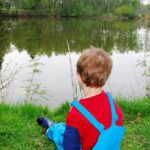West Lake Village
“Treat the Earth well. It was not given to you by your parents; it was loaned to you by your children.”
-Ecologist Lee Talbot
The lake is our greatest asset.
Studies show that water clarity has a statistically significant impact on property prices. Clearer water means higher property prices, all things being equal. Therefore Proactive lake management is crucial to help preserve the health, beauty and depth of our lake. A proactive plan doesn’t just address the conditions in the water, it also looks at the surroundings.
Nitrogen allows nutrient-rich plants and algae to grow. Other organisms feed off these plants and algae, creating a complex, healthy ecosystem. As they are the source of oxygen. A lake must have a healthy amount of oxygen to sustain life, but nutrient pollution will occur when there is an excess of NITROGEN and PHOSPHEROUS.
Source of pollutions are from a watershed. Every lake is in a watershed of some sort and the run off from watershed flows into the lake, this watershed includes the ground up to the water’s edge. This run off is the major culprit of lake pollution.
Therefore, we must mitigate as best as possible the introduction of these pollutants
Lake Commission
Lake management planning process is a way for stakeholders to come together with a common interest in improving and protecting their lake. Having a document with specific goals, objectives, and actions for the future of the lake makes the lake management process easier and helps guide how time and resources are spent.
Strategic Imperatives
Prioritize safety, legality, ethics, and fiduciary responsibility above everything.
Build in elements of sustainability into everything we plan and execute
Communicate efficiently and effectively with all stakeholders by informing lake users, rules, and actions.
Seek out and leverage resources to help achieve our mission
Consider short-medium-long term activities to achieve our mission
Manage and make decisions using data to the fullest extent possible
Update and Revise all which will change over time as lake issues or management techniques change.
Managing Our Lake

Dredging -Every 5 Years
Dredging is the process of removing excess sediment. This is an impactful management solution to overcome the lake’s natural process of sedimentation. Dredging helps reset the lifecycle of a waterbody and has many benefits. One is it removes nutrient-laden sediments.

What is a Watershed
A watershed is the area of land where all of the water that falls in it and drains off of it goes to a common outlet, our lake. We are surrounded 1000s of acres of watersheds. Not only does water run into the lake from the surface of a watershed, but water also filters through the soil, and some of this water eventually drains into the lake.

We Have a Wetland
Wetlands are the ‘kidneys of lakes We are fortunate to a have wetland which can intercept runoff from surfaces prior to reaching our lake and remove pollutants. It is therefore IMPORTANT that we manage and maintain the wetland, if we do nothing our lake would suffer irreparable damage. Therefore we must DREDGE the ponds

Help the Wetland
We have to plant and preserve a naturally vegetated buffer between sensitive land and water resources.
Vegetated buffers help shield wetlands from polluted storm water runoff,
soil and bank erosion, toxic chemicals and other substances that would otherwise
flow into the water. We must also protect wetlands from human disturbance. NO FISHING SIGNS.

What Can We Do
Many Small actions = One Big Impact.
We all should use fertilizers and lawn services that do not use phosphorus. Pick up pet waste which is high in nutrients similar to fertilizer and has fecal bacteria. In the winter, use less salt on your sidewalks and driveways.

What We Must Do.
Lakes are complex ecosystems with numerous inputs and outputs that can impact water quality in subtle or drastic ways. A real-time monitoring system enables lake management to stay abreast of constantly changing water quality, and a nutrient budget thus, enabling any mitigation deemed necessary. We regularly have to do a fish survey to help us maintain a good assortment of healthy fish.

Aquatic Invaders.
The economic and social impacts of invasive species include both direct effects of a species on property values, and our lake water quality as well as costs associated with invasive species control efforts. There are nearly 200 non-native species in the Great Lakes region. Boaters, and anglers can easily spread aquatic invaders by accidentally moving adults, juveniles, larvae, plant parts or seeds. Aquatic invaders can attach to fishing lines, nets, boats, trailers, bait buckets. Do Not enter our lake with aquatic plants and animals on the exterior of watercraft or boat trailers. Dispose of all unwanted bait and fish parts in the trash not into the water. Never release organisms caught from another waterbody into our lake Unfortunately, we have no way to wash the outside of our boats or trailers.

Woodchip Bioreactor.
We aim to introduce a few more Bio Reactors. To reduce nitrate contamination of water bodies, scientists are researching ways to remove nitrate from the drainage water. A wood chip bioreactor has proven to be an effective and affordable way to remove nitrate. Wood chips work in conjunction with carbon-eating bacteria to remove the pollutant. These woodchip bioreactors can eliminate 15 to 90 percent of nitrate in drainage water.
Fish and Fishing
Don’t Kill Your Limit.
After being caught and released by an angler, fish may die for a variety of reasons. The most common causes of death are the physiological stresses caused by the struggle during capture and injuries caused by the hook or the angler.
Two types of hooks, barbless and circle hooks, are known to reduce injury and mortality of released fishes. Barbless hooks reduce tissue damage and handling stress because they can be removed quickly and easily.
If barbless hooks are not available, simply use pliers to crimp or remove the barbs from regular hooks. A caveat is called for when using these types of hooks: after having hooked your quarry, don’t give the fish any slack, because it will be more likely to escape from barbless hooks than from regular hooks.
Our Fish








Teach our Kids to Fish.
Have fun. Part of being a parent, step-parent, guardian or friend to children is to enjoy each event on their level. The number of fish caught, the species of fish or the size of fish is not important. It is important for children to enjoy the outdoors and fishing. Make this trip one of many such bonding experiences. You can introduce kids to nature, the value of the environment, the importance of fish and game laws and the biology and habitat of fish. The “fun” part is most important, so that they will want to go fishing again. Such trips will help cement relationships and help children learn about a sport that they can enjoy their entire lives.
Contact Us
Lake Committee email — https://www.wlvlore@gmail
Lake Management Committee
- Mike Lambert
- Bryan Hutting
- Dennis Nampel
- Greg Surufka
- LaVerne Weber
- Jan Stewart
- John A Peterson
- Billy Craft
- Leanna Mraz
- JadEco LLC (J Rush)
Property of WLV Lake Management Committee
